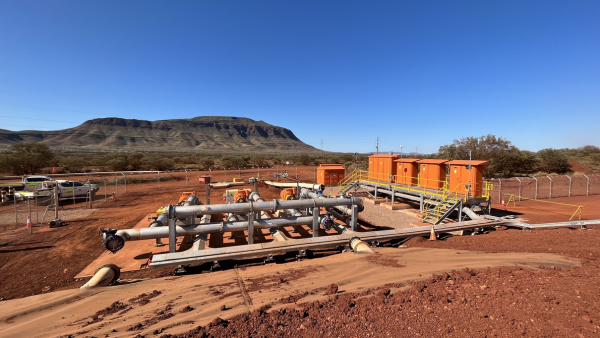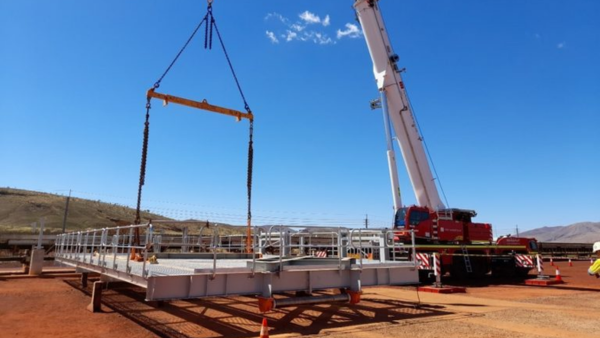Over the last five years, our team in the Pilbara has been awarded 82 conveyor gravity take-up (GTU) upgrades. Our Coastal and West Pilbara Projects teams, based in Karratha and Tom Price, continue to showcase their expert capability in this area, well and truly earning themselves the status of ‘subject matter experts’ and a pipeline of work upgrading GTU towers across Rio Tinto’s Pilbara operations.
We caught up with Project Leads, Jordan May and Todd Stanes, who gave us a breakdown of these projects and outlined what sets Monadelphous apart.
Why are GTUs important?
GTUs allow the tension of the conveyor belt to be maintained during operation. An incorrectly tensioned belt can cause a range of problems, including mistracking, excessive belt wear and unpredictable belt behaviour. A heavy counterweight or ‘mass’ pulls down on the belt to automatically maintain the appropriate tension using gravity. GTU towers also function to allow de-tensioning of the belt for maintenance activities.
What does this work consist of?
Each GTU tower upgrade is different. Being brownfields upgrades, each design is unique to suit the existing structure and therefore these upgrades are not a rinse and repeat exercise. Added complexity also comes from the nature of the works requiring a wide range of disciplines working together, including design and detailing, civil, structural, mechanical, piping, electrical, instrumentation and software controls.
A typical GTU tower upgrade consists of retrofitting an electric winch (and associated cable and sheaves) to the system, which allows the mass to be raised and lowered at the push of a button; replacement of the mass itself, which allows it to be isolated with a pin mechanism that can be safely operated from outside the guarding; installation of a pulley removal platform and trolley that allows the GTU pulley to be changed out in a much safer and more efficient way; electrical controls and limits to automatically safeguard against any failures; and guarding and structural bracing upgrades to support the new system.
Why are we installing winches?
Most maintenance activities on conveyors require the belt to be de-tensioned. The previous method for de-tensioning the belt required lifting the mass with a crane and securing it on chains. The task involved a lot of high-risk work, including lifting operations, working at height, and working within the line of fire of the mass.
The installation of winches and pin mechanisms eliminates the requirements for cranes and the need for personnel to go into the guarded areas, removing exposure to suspended loads and moving components. The new designs eliminate the safety hazards involved with the previous isolation method, while simplifying and streamlining routine maintenance activities.
Why do you think we have continued to win work in this space?
We have built a relationship with the customer based on trust, which has been established through our strong performance, effective communication and a collaborative mindset. We pride ourselves on continuously and proactively looking for improvements to the process with each new contract awarded.
This includes reviewing the constructability of the design and developing an innovative construction methodology. Doing so allows us to complete the works in a safer manner and creates opportunities for schedule optimisation, so the works can be completed within the tight shutdown windows. You may recall in 2018, we captured some time-lapse video that highlights our approach to finding improvement on these projects.
It was recently announced, the team has secured two new contracts with Rio Tinto under its Sustaining Capital Projects Panel Agreement to undertake upgrades to the conveyor GTUs at Tom Price and Cape Lambert Port A in the Pilbara region.
Well done team - we look forward to seeing you continue to successfully execute these projects for years to come.




Leave a comment